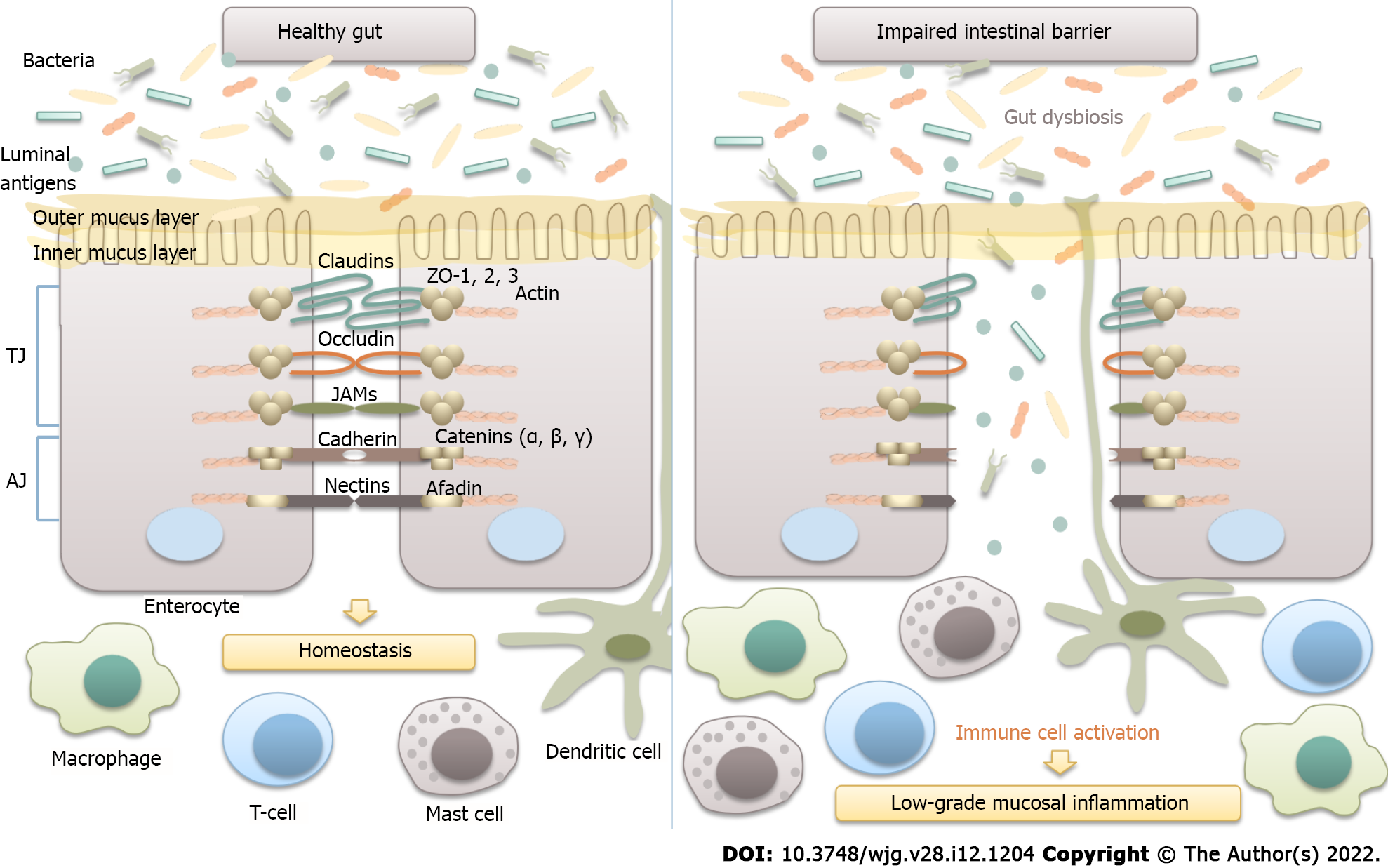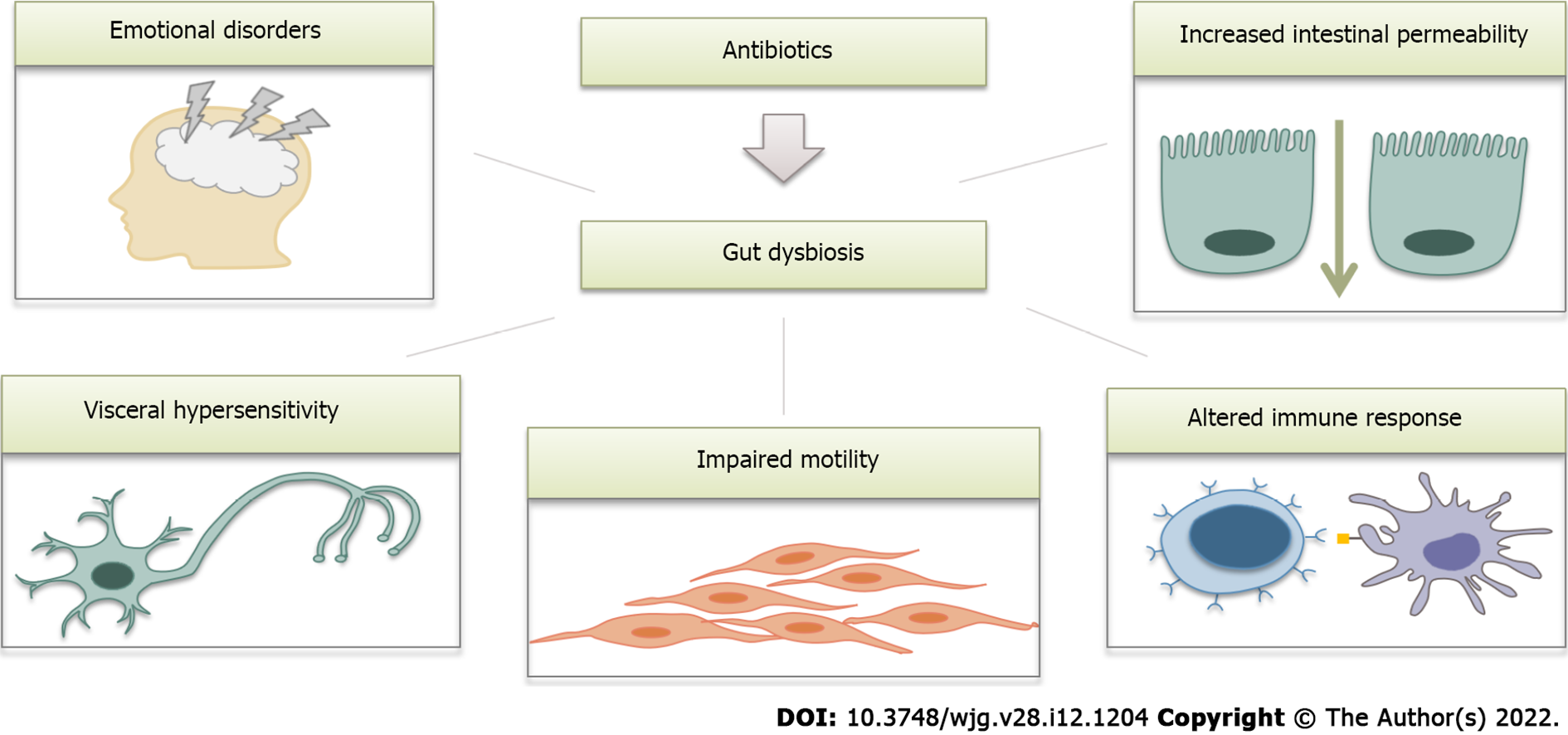Copyright
©The Author(s) 2022.
World J Gastroenterol. Mar 28, 2022; 28(12): 1204-1219
Published online Mar 28, 2022. doi: 10.3748/wjg.v28.i12.1204
Published online Mar 28, 2022. doi: 10.3748/wjg.v28.i12.1204
Figure 1 Neurotransmitter modulation by gut microbiota (schematic illustration).
Bacterial metabolites, such as short-chain fatty acids (SCFAs), secondary bile acids, and indole, are able to stimulate the production of neurotransmitters, including glucagon-like peptide-1 (GLP-1), peptide YY (PYY), and serotonin (5-HT). They act through G-protein coupled receptors (GPCRs) FFAR2, FFAR3, and TGR5 that are coupled to different types of G proteins (Gαs, Gαq, and Gαi) and activate different pathways known to regulate gene expression and promote exocytosis by raising intracellular Ca2+ levels. SCFAs are recognized by FFAR2 and FFAR3. Enteroendocrine L-cells express both of these proteins, whereas enterochromaffin (EC) cells have been reported to express FFAR2. Bile acids are recognized by TGR5 receptors expressed in L-cells and EC cells. The sensing of indole remains elusive, although it is thought to act through GPCR. Gαs stimulates adenylate cyclase and elevates cyclic adenosine monophosphate (cAMP), which activates protein kinase A (PKA). Gαi inhibits the cAMP pathway. Gαq stimulates phospholipase C (PLC), resulting in the generation of diacylglycerol (DAG) and inositol triphosphate (IP3), which activate protein kinase C (PKC) and induce intracellular Ca2+ release[23,138-140]. SCFA: Short-chain fatty acids; GLP-1: Glucagon-like peptide-1; PYY: Peptide YY.
Figure 2 Microbiota and intestinal barrier integrity.
The intestinal barrier plays an essential role in maintaining host homeostasis. It is mainly composed of the mucus layer, the epithelial layer, and the underlying lamina propria. Intestinal epithelial cells are tightly attached to each other by junctional complexes. Tight junctions (TJs) are composed of several proteins, including occludin, claudins, zonula occludens (ZOs), and junctional adhesion molecules (JAMs), which interact with each other, as well as with the cytoskeleton. The adherence junction is composed of the nectin-afadin system and the E-cadherin-catenin system. Intestinal epithelial barrier integrity prevents the translocation of bacteria and luminal antigens to the mucosa, thus averting their interaction with the host immune system and the development of low-grade mucosal inflammation in the gut wall. TJ: Tight junctions; AJ: Adherence junction; JAM: Junctional adhesion molecules.
Figure 3 Possible link between antibiotic use and the development of irritable bowel syndrome (schematic illustration).
Antibiotics cause profound changes in the gut microbiota and therefore contribute to all mechanisms involved in the pathogenesis of irritable bowel syndrome.
- Citation: Mamieva Z, Poluektova E, Svistushkin V, Sobolev V, Shifrin O, Guarner F, Ivashkin V. Antibiotics, gut microbiota, and irritable bowel syndrome: What are the relations? World J Gastroenterol 2022; 28(12): 1204-1219
- URL: https://www.wjgnet.com/1007-9327/full/v28/i12/1204.htm
- DOI: https://dx.doi.org/10.3748/wjg.v28.i12.1204











